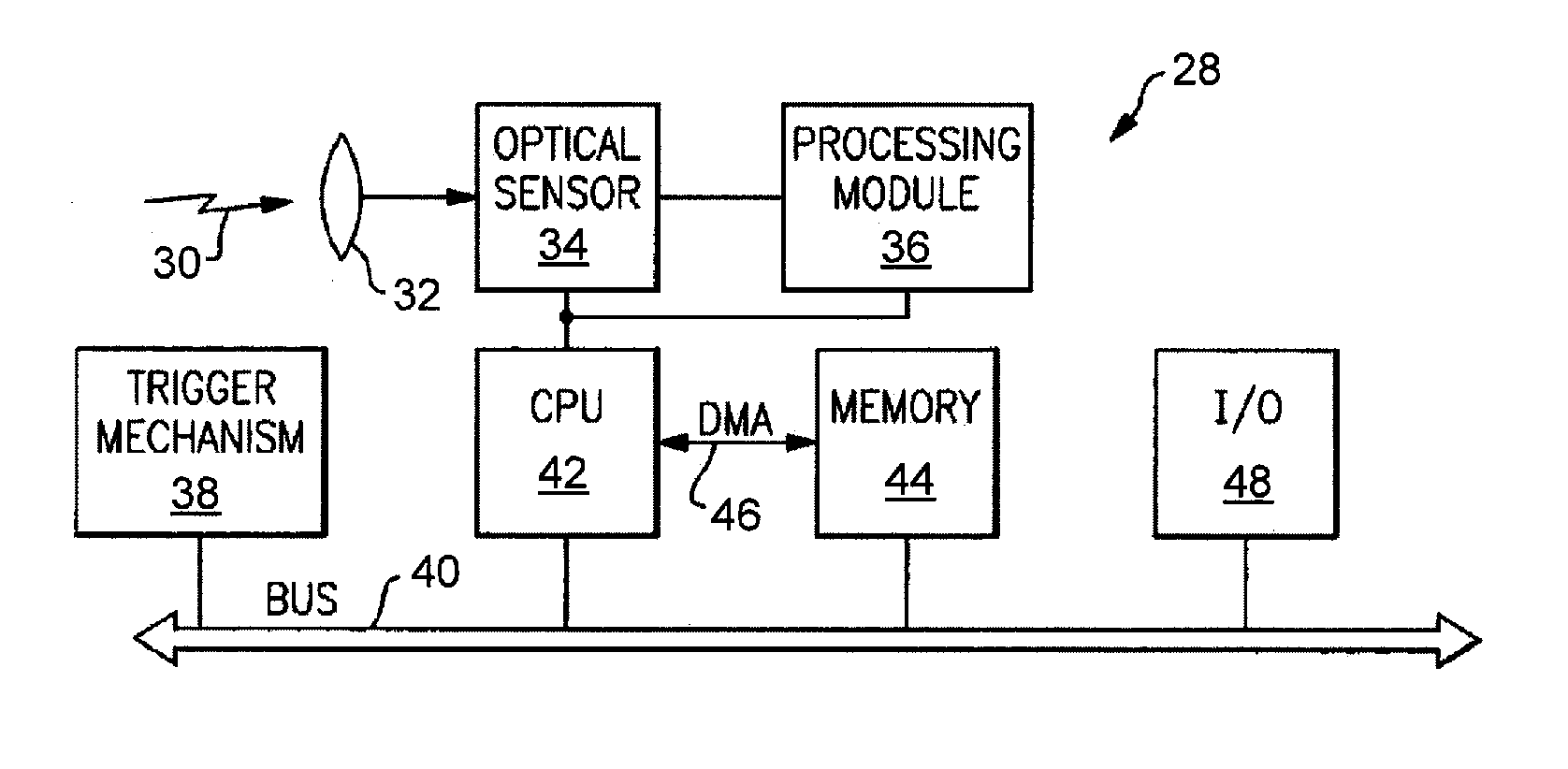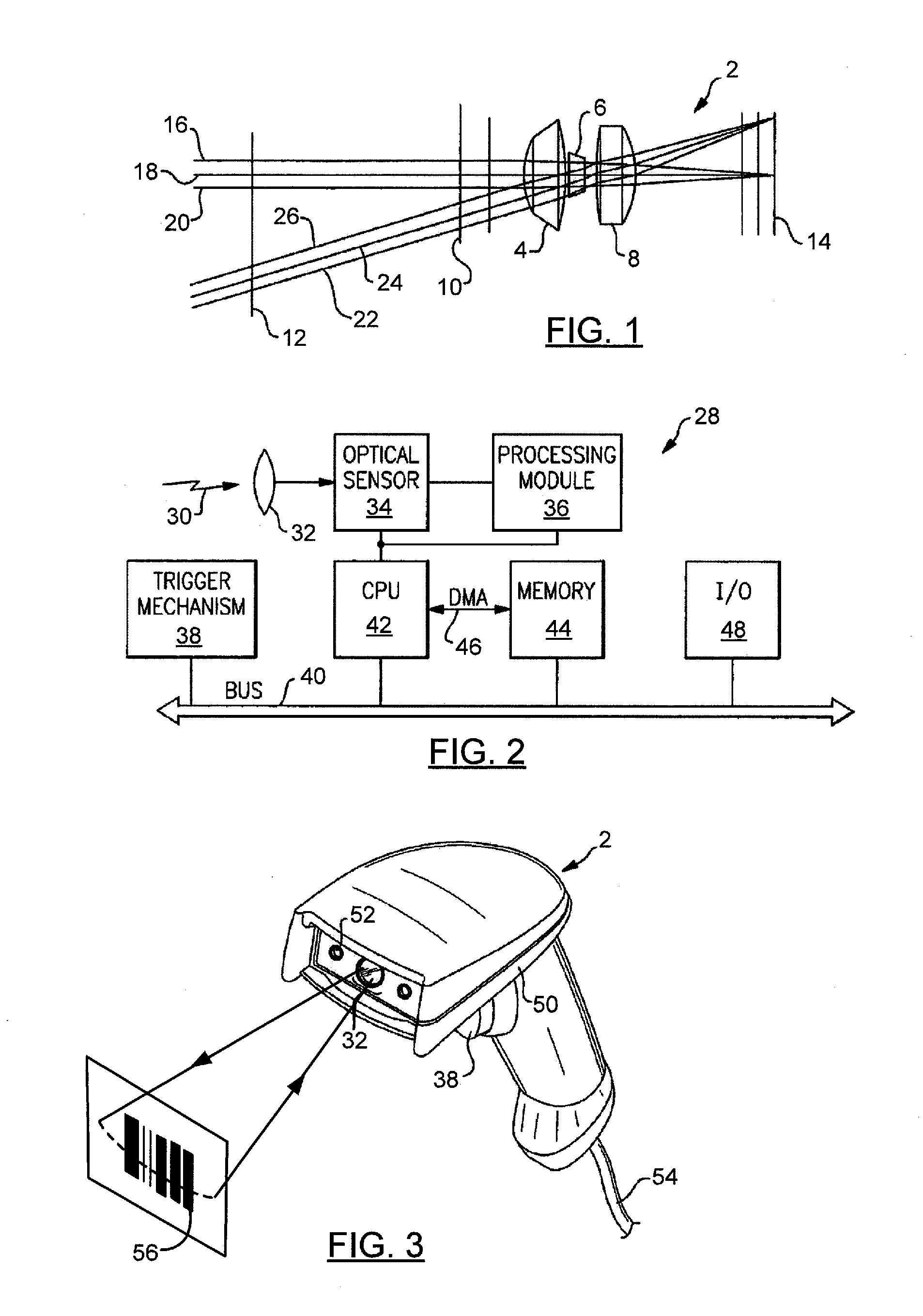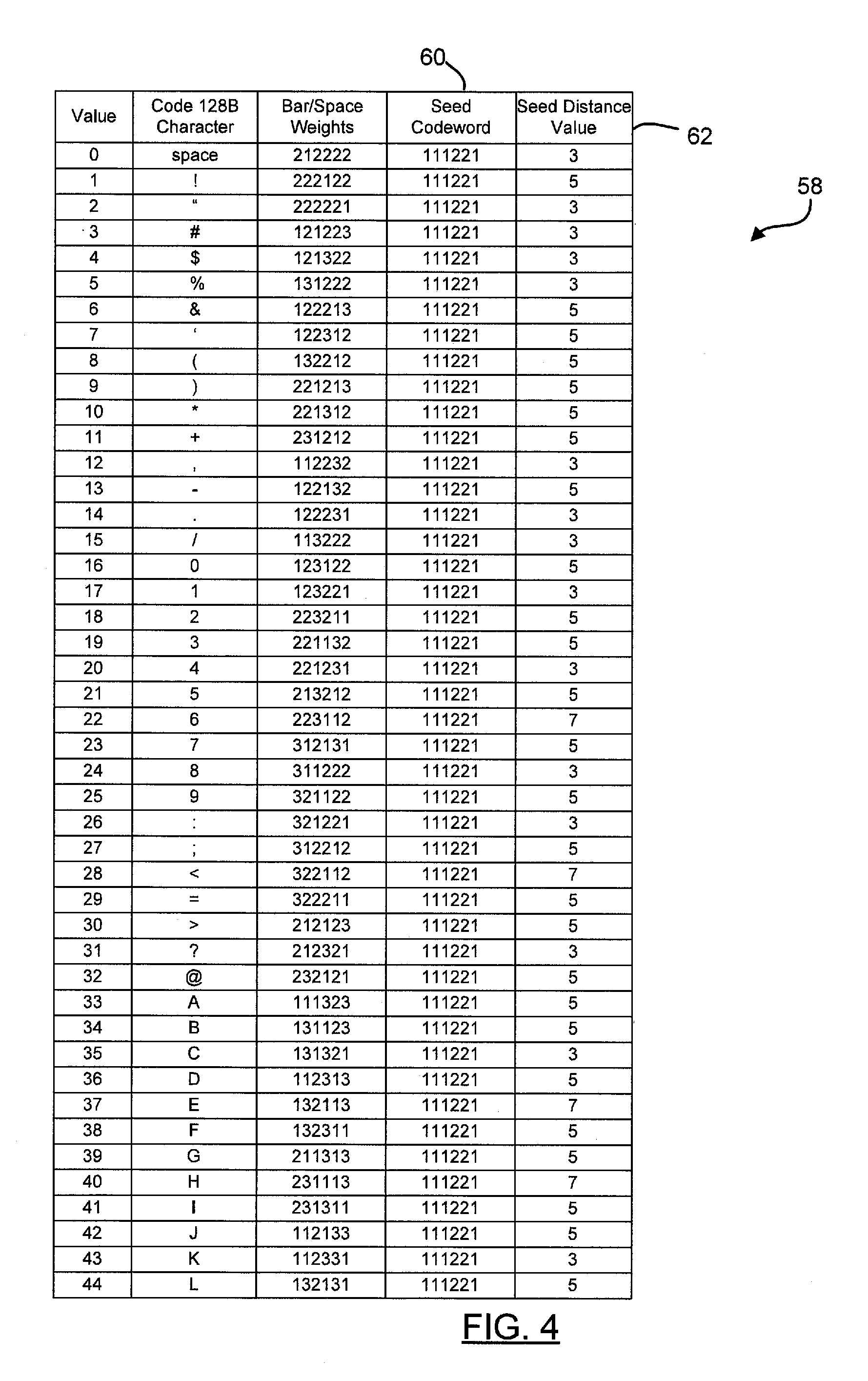Optical reader using distance map decoding
a distance map and optical reader technology, applied in the field of optical scanning systems, can solve the problems of adding cost, complicated improvements, and limited working range of conventional optical scanning systems, and achieve the effects of reducing the cost of operation, and increasing the cost of operation
- Summary
- Abstract
- Description
- Claims
- Application Information
AI Technical Summary
Problems solved by technology
Method used
Image
Examples
Embodiment Construction
[0017]In a barcode image, some a priori knowledge is available of what the particular barcode is expected to look like, and hence how it is expected to appear in coded form. For example, a barcode image may comprise one or more bars and spaces (i.e., is represented by a step function, or in some embodiments, is a function representable as a gray scale). When imaged with an imaging engine or a barcode reader, the barcode is represented as a codeword, or character, having a sequence of binary, or in some cases, gray scale, values. In principle, a decode table which defines the exact step function (or gray scale value) of each valid character is available. However, checking each barcode image against every entry in a decode table is time-consuming, even for modern processors. The systems and methods of the present invention provide a means by which the barcode image may be accurately decoded by checking only a small subset of the decode table, thereby decreasing the decode time.
[0018]A...
PUM
 Login to View More
Login to View More Abstract
Description
Claims
Application Information
 Login to View More
Login to View More - R&D
- Intellectual Property
- Life Sciences
- Materials
- Tech Scout
- Unparalleled Data Quality
- Higher Quality Content
- 60% Fewer Hallucinations
Browse by: Latest US Patents, China's latest patents, Technical Efficacy Thesaurus, Application Domain, Technology Topic, Popular Technical Reports.
© 2025 PatSnap. All rights reserved.Legal|Privacy policy|Modern Slavery Act Transparency Statement|Sitemap|About US| Contact US: help@patsnap.com



